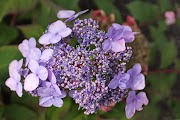DSLR PHOTOS
PHONE PHOTOS

Theme
|
Subject
|
Reason
|
fist
|
clenching with anger
| |
my sister and I
|
jumping with power
| |
3. Ugly
|
cow
|
dirty and gross
|
4. Calm
 |
Avneet
|
sitting under a tree
|
5. Compassion
 |
Ava and Jaxton
|
hugging
|
6. Authority
 |
my dog
|
standing in window showing authority
|
7. Pride
 |
PSU flag
|
support there team
|
8. Mysterious
 |
me
|
walking into woods not knowing where were going.
|
9. Wisdom
 |
books
|
knowledge from learning at school
|
10. Love
 |
flower
|
when you buy someone flowers it shows them love
|
11. Lazy
 |
my dog
|
sleeping being lazy
|
12. Temptation
 |
chocolate
|
candy is tempting
|
13. Happiness
 |
Avneet
|
jumping with joy
|
14. Growth
 |
tree
|
tree is growing
|
15. Memories
 |
sophias
|
my friend and I ate there over the summer and made memories
|
16. Sounds
 |
violin
|
plays music
|
17. Diversity
|
Avneet and I
|
different color skin
|
18. Dangerous
 |
caution tape
|
protects you from entering danger
|
19. Hope
 |
sand
|
hope written in sand
|
20. Truth
 |
diary
|
write how you truly feel in your diary
|
21. Patriotic
 |
American flag
|
support the country
|
22. Sad
 |
my dog
|
sad because she didn't get to go outside
|
23. Terrifying
|
bear
|
could attack you
|
24. Abandoned
|
house
|
no one takes care of it
|
25. Courage
|
me
REASON:
You go high in the air which takes courage
|